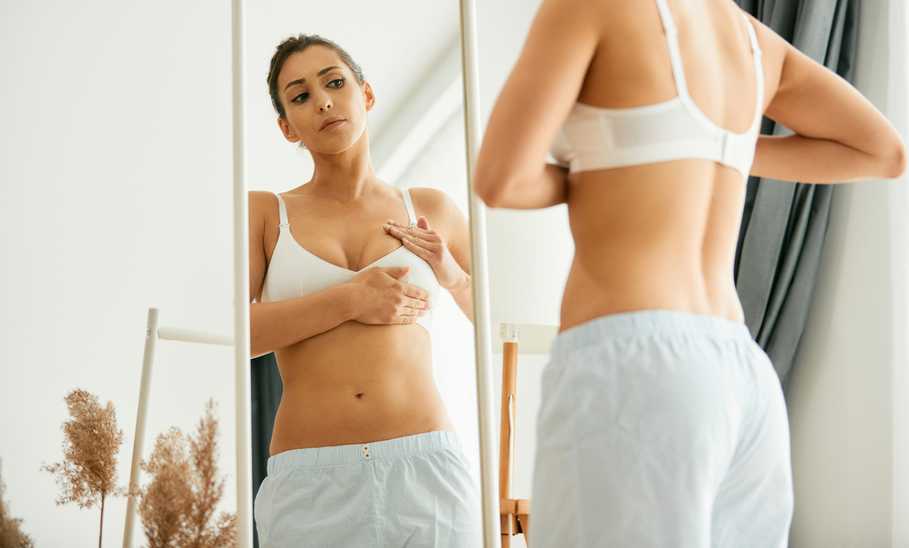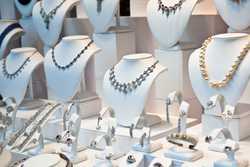How Should a Bra Fit, According to Bra Experts


Our evaluations and opinions are not influenced by our advertising relationships, but we may earn a commission from our partners’ links. This content is created by TIME Stamped, under TIME’s direction and produced in accordance with TIME’s editorial guidelines and overseen by TIME’s editorial staff. Learn more about it.
Whether you’re a bra-wearer or shopping for one, knowing how a bra should fit is key to achieving comfort and value. That said, many people who wear bras don’t wear bras that fit well and often experience discomfort—that’s where the experts step in. I tapped Jené Luciani Sena, bra expert and bestselling author of The Bra Book, Amelia Newman, Intimates Technical Designer at Adore Me, and Ra’el Cohen, co-founder and chief creative officer at ThirdLove, to learn more about bra fitting and sizing so you can have the knowledge needed to purchase a bra with the perfect fit.
A bra cup should fit in such a way that your breast tissue is completely contained without gapping or spillage. “Cups are too big if they are gaping and open at the neckline,” explains Newman. “If the cups are pressing on the breast tissue (think double boob) or you’re experiencing a lot of side boob, then they are likely too small.” Luciani Sena adds that another way to recognize if your bra cups fit properly is if your nipple line appears halfway between your shoulders and elbows.
Cohen notes that a bra band should sit parallel to the ground when fairly snug around your body but comfortable enough to place two fingers underneath in the back without it riding up. “A bra band should not be too tight that it leaves marks, but also shouldn’t be too loose as that is where most of the support comes from,” says Cohen.
If you wear bras or are shopping for one with an underwire, Luciani Sena notes that the underwire should not ride up or dig into your skin. All of my bra experts agree that the underwire should lie flat against the ribcage.
If you purchase a bra with straps, the straps mustn't slip. In most cases, snug straps are recommended as long as they do not dig. Bra straps should have an even and comfortable fit. Newman notes that it’s time to adjust bra straps when they dig or slip. Furthermore, since bra straps provide some (not all) breast support, ensuring that they are regularly adjusted is necessary. “Remember to adjust your straps every month or so as the elastic naturally stretches out,” says Cohen.
A bra should feel comfortable, painless, and almost like an extension of your skin, says Newman. A bra should feel as though it’s helping you (and your breasts) instead of hurting.
According to Cohen, the signs that your bra doesn’t fit properly may include the band being too loose, the underwire digging into the ribcage, the cups not forming to the curve of the breasts, and the straps not being secure. “If your bra feels uncomfortable and is poking, pinching, or creating unflattering bulges anywhere, it doesn't fit you properly,” says Newman. Check out our guide to knowing how to measure your bra size to find a better fit.
Although the experts can’t tell you exactly why your bra may feel uncomfortable since they can’t see you (or your bra), they can tell you some factors that may contribute to bra discomfort. Luciani Sena notes that weight loss and weight gain, in addition to hormonal changes in pregnancy or menopause, can sometimes cause bras to feel uncomfortable.
Furthermore, Newman notes that claims made about uncomfortable bras are sometimes made by those wearing the wrong size and experiencing digging as a result (which, unfortunately, is the case for many bra-wearers). Paying attention to the material of your bra is also something to consider, as it could be that the fabric is itchy, is irritating your skin, or is poorly constructed. Your bra may simply be uncomfortable because it’s worn out, says Cohen.
“There is no proper positioning of the breasts as breasts are breasts and come in all different shapes and sizes naturally,” explains Newman. The primary thing is to ensure they are comfortably placed inside of the cups.
Luciani Sena notes that since it’s important for all breast tissue to rest inside a bra’s cups, the way one puts on a bra is crucial and not a process most people adhere to or know about. “In order to achieve this, you must bend over at the waist and put the straps around your arms,” says Luciani Sena. “This allows all your breast tissue to fall forward before standing up and clasping the back of the bra.”
The right bra can provide a plethora of benefits to bra-wearers. Cohen notes that the right bra enhances and flatters breasts. In addition to lifting and providing the breasts with a more shapely appearance, the right bra can provide the coverage and support level one needs to feel comfortable and happy. However, what one considers the “right” bra will differ by person and their preferences. Aside from the physical benefits, the emotional benefits are plentiful. “You look and feel better—more confident—and able to take on the world when you’re in the right bra,” says Luciani Sena.
Your bra fits perfectly when there is no spillage, digging, or riding into your back or sides. Whether you’re looking for a bra for large breasts, a sports bra, a demi bra, or a minimizer bra, you’ll know when your bra fits perfectly when you feel comfortable, supported, and as though you fit the bra as opposed to the opposite, says Cohen.
The information presented here is created by TIME Stamped and overseen by TIME editorial staff. To learn more, see our About Us page.



